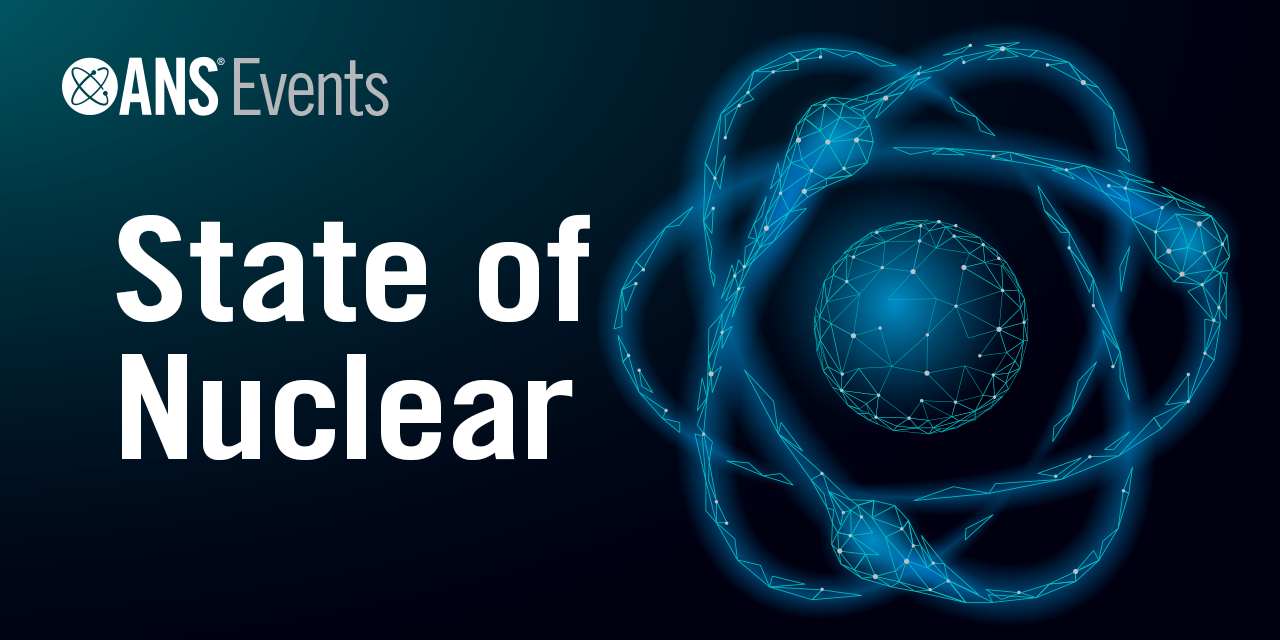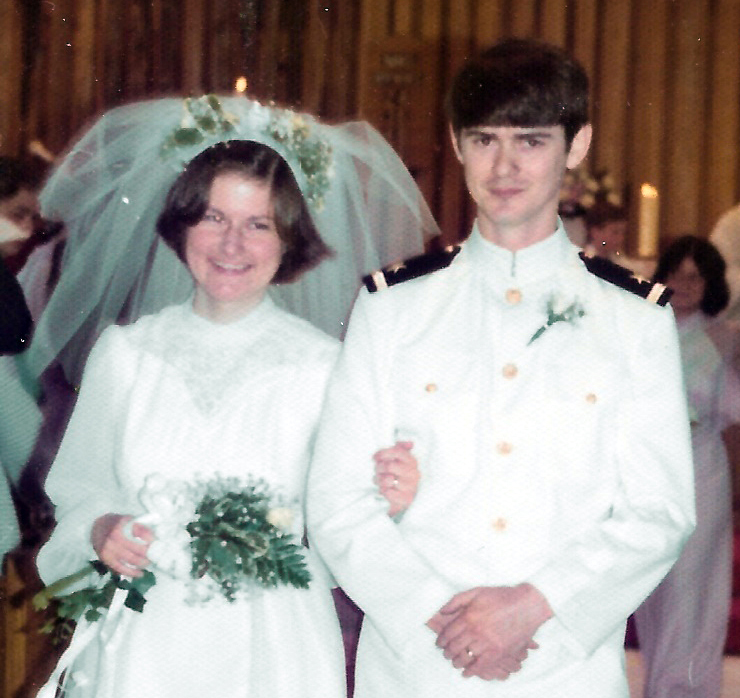ANS publishes new standards
The following standards from the American Nuclear Society were published in 2024 and are available in the ANS Store:

The following standards from the American Nuclear Society were published in 2024 and are available in the ANS Store:
Following approval in October from the American National Standards Institute, ANSI/ANS-3.11-2024, Determining Meteorological Information at Nuclear Facilities, was published in late November. This standard provides criteria for gathering, assembling, processing, storing, and disseminating meteorological information at commercial nuclear power plants, U.S. Department of Energy/National Nuclear Security Administration nuclear facilities, and other national or international nuclear facilities.
 I like to say that I ended up at Massachusetts Institute of Technology because of my father. He saw that I seemed intimidated by the prospect of going there, so he dared me, figuring I would take the bait. And I did.
I like to say that I ended up at Massachusetts Institute of Technology because of my father. He saw that I seemed intimidated by the prospect of going there, so he dared me, figuring I would take the bait. And I did.
I graduated with a bachelor’s and master’s in physics in 1968, and two days later I married my classmate, Mike Marcus. After a summer at Ft. Monmouth, where I studied radiation damage to semiconductors, we spent the next few years back at MIT in grad school—Mike in electrical engineering and I in nuclear engineering. It was Mike who steered me toward nuclear engineering, noting that my interest was radiation damage to materials, and the nuclear engineering department was doing more of that than the physics department.
One of the few constants at American Nuclear Society national meetings is the recognition of exceptional individuals in the nuclear community. ANS President Lisa Marshall has named this season’s award recipients, who received recognition at this week's Winter Conference and Expo in Orlando, Fla.
ANS also announced the winners of awards presented by the Society’s professional divisions. These awards have been mailed to the recipients, and the divisions have recognized or will recognize honorees at various division functions and meetings this fall. The 19 professional divisions of ANS are constituent units and represent a vast array of nuclear science and technology disciplines.

A trailblazing nuclear trade journalist, a UFO-debunking nuclear physicist–turned–space scientist, and the engineer behind both America’s first licensed reactor and the world’s first nuclear-powered merchant ship: this was the visionary trio who founded the American Nuclear Society 70 years ago.

As the American Nuclear Society’s 2024 Winter Meeting and Expo kicks off in Orlando, Fla., the nuclear industry’s eyes are turned toward the future—advanced technologies, updated regulations, a new administration, and importantly, the future of the workforce.

As a primer to the American Nuclear Society Winter Conference and Expo, ANS Executive Director/Chief Executive Craig Piercy hosted a panel discussion titled “The State of Nuclear,” sponsored by the ANS Trustees of Nuclear. The October 29 discussion, the first in a two-part series, featured five thought leaders from the nuclear community as they reviewed the current state of nuclear power. The second panel will take place during the ANS Winter Conference in Orlando, Fla., on November 18.

As the U.S. election season finally comes to an end, the annual American Nuclear Society election season is right around the corner. Seventeen candidates have been nominated for the positions of ANS vice president/president-elect, treasurer, and six positions on the board of directors (four U.S. directors, one non-U.S. director, and one student director). Ballots will be sent via email on Tuesday, March 4, 2025, and must be submitted by 1:00 p.m. (EDT) on Tuesday, April 15, 2025.

The life and career of James Wm. Behrens have been intertwined with the American Nuclear Society since his joining as a member in 1979. Now, to recognize Behrens for his philanthropic and programmatic commitment to ANS, the conference room at ANS's new headquarters has been named in his honor.

Julie and Jim Byrne on their wedding day, May 22, 1976.
As I was finishing my studies at the University of Pittsburgh and about to graduate with a degree in civil engineering, I talked to a local navy recruiter about a position with the Seabees. He told me there were no Seabee billets, but that the navy had a nuclear power program that might interest me. When I said yes, it wasn’t long before I was whisked off to Washington, D.C., to interview with someone named Admiral Hyman Rickover. The one thing they told me was to stand up to “the kindly old gentleman.”
The day started with technical interviews and then I was ushered into the admiral’s office. I was a typical college student, and I spent my money on food and beer and not on haircuts. On seeing me, Admiral Rickover told me that I looked like a girl. After a bit of back-and-forth, he asked me a couple of other questions. His last comment to me was that I must know something and to get out of his office.

This year marks the 70th anniversary of the founding of the American Nuclear Society.
Plenty of sources incorrectly list our birthday, but the reality is that October 11, 1954, is the correct date for the establishment of ANS.

John Kelly, ANS past president (2018–19), passed away peacefully in his sleep on October 3, 2024, in Gilbert Ariz., at the age of 70. Kelly was born on March 9, 1954, and was the eldest of Jack and Aileen Kelly’s six children.
His career, which spanned more than 40 years, began at Sandia National Laboratories in Albuquerque, N.M., where he focused on safety and severe accident analysis. His leadership led him to Washington D.C., where he served as the deputy assistant secretary for nuclear reactor technologies at the U.S. Department of Energy. Kelly played a critical role in shaping nuclear policy and guiding the world through significant events, including the Fukushima Daiichi accident in Japan. At the end of his career, he was honored to serve as the American Nuclear Society’s president. In retirement, he was actively involved with ANS in technology events and mentoring the next generation of scientists.
Kelly is survived by his wife, Suzanne; his children Julie Kelly-Smith (Byron), John A. (Sarah), and Michael (Nicole); and grandchildren Kiri and Kyson Smith and John and Maximilian Kelly. His family was his pride and joy, including his cherished dog, Covie, who brought him happiness in recent years.
In lieu of flowers, donations may be made to the American Nuclear Society or Detroit Catholic Central High School (27225 Wixom Road, Novi, MI 48374). Please designate Memorial and specify John Kelly ’72 Memorial Fund.
In honor of Kelly's commitment to ANS and to celebrate his life, his profile from the July 2018 issue of Nuclear News is published below.
The American Nuclear Society recently selected two of its members to serve as the 2025 Glenn T. Seaborg Congressional Science and Engineering Fellows. The 2025 Congressional Fellows, Jacob Christensen and Mike Woosley, will help the Society fulfill its strategic goal of enhancing nuclear policy by working in the halls of Congress, either in a congressional member’s personal office or with a committee, when their fellowship term begins in January.

The American Nuclear Society and the Nuclear Energy Institute have announced a new partnership regarding two of their flagship industry conferences.
ANS’s annual Utility Working Conference and Vendor Technology Expo and NEI’s Nuclear Energy Assembly will merge during the week of September 8, 2025, in Atlanta, Ga. The news was shared during the kickoff of the 2024 NEA meeting, happening this week in Philadelphia, Pa.
ANS open letter to Science magazine challenging claims about HALEU
September 3, 2024
Dr. Holden Thorp
Editor-in-Chief, Science
Subject: Science magazine Policy Forum article “The weapons potential of high-assay low-enriched uranium” published June 2024
Dear Dr. Thorp:
The American Nuclear Society—a professional nuclear science and technology society representing more than 10,000 members worldwide—writes this open letter to address concerns regarding Science magazine’s June 2024 Policy Forum article, entitled “The weapons potential of high-assay low-enriched uranium” by R. Scott Kemp, Edwin S. Lyman, Mark R. Deinert, Richard L. Garwin, and Frank N. von Hippel.
The article describes the potential misuse of high-assay low-enriched uranium (HALEU)1. We acknowledge the importance of this discussion and the necessity of continually evaluating the proliferation risks associated with nuclear materials. However, after extensive technical review of the article by members and officers of the ANS Fuel Cycle and Waste Management Division and the ANS Nuclear Nonproliferation Policy Division, we remain unconvinced of the positions advocated by the authors.
The American Nuclear Society is excited to announce the launch of its inaugural Nuclear 101 certificate course, scheduled to take place in-person at the 2024 ANS Winter Conference and Expo this November. This comprehensive five-day program is designed to provide participants with a robust understanding of nuclear energy and engineering, delivered by some of the field's foremost experts.
Five new directors-at-large joined the American Nuclear Society Board of Directors in June, at the end of the 2024 ANS Annual Conference. Last April, the four at-large members were elected from an initial pool of eight candidates; the Young Member, from a pool of two. Get to know a little about the new ANS leadership below.

Next Monday, July 29, 10:00–11:00 a.m. (EDT), the American Nuclear Society will host a panel discussion titled “Changing Strategy: International Deployment of Nuclear Power Plants.”
Register here—the webinar is open to all viewers.
ANSI/ANS-8.28-2024, Administrative Practices for the Use of Nondestructive Assay Measurements for Nuclear Criticality Safety, was issued on July 15 after receiving approval of the American National Standards Institute in March.
ANSI/ANS-8.28-2024 is now available for purchase in the ANS Online Store.
An analysis of the LDR-50 low-temperature nuclear district heating reactor, developed by Steady Energy, indicates that “significant reductions in CO2 emissions can be achieved by replacing fossil heating fuels with nuclear energy [district heating].” The study, conducted by researchers from the VTT Technical Research Centre of Finland and published in the journal Energies, describes carbon footprint reductions and other environmental benefits derived from the LDR-50, which Steady Energy hopes to introduce in Finnish and other European district heating markets by the 2030s.